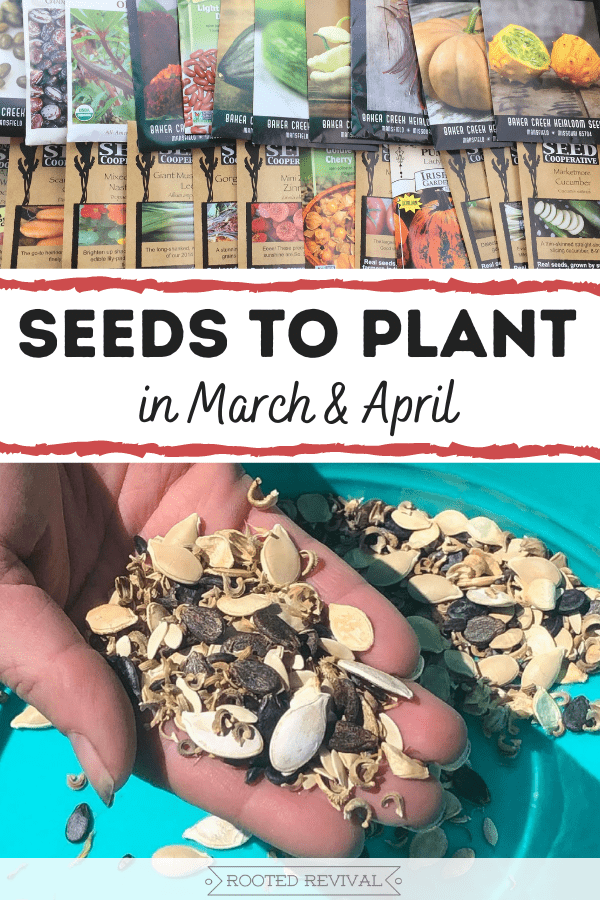What can you sow and grow right now? I’ve got a full list of seeds you can plant in your garden and indoors during March and April!
It’s hard to believe it, but March is here! And it’s prime seed sowing time!
But what exactly should you be sowing right now? Is it too early to plant seeds outside? And what seeds need to be planted inside? How early should you start each of your seeds?
If you are a new gardener, it can be really confusing to figure out the timing for it all! It can be even more confusing to understand which crops should be sown indoors and which ones can and should be direct seeded into the garden.
It took me several years to figure out the ideal timing for starting my seeds. And what I found over the years is that, for me, it’s easiest if I let nature direct the process! So I don’t use a hard and fast calendar-style count down for sowing my seeds. Because of this, I’ve found that I have a lot more flexibility as to when I start my seeds.
So, today I’m going to share that process with you! We’ll talk about cool season gardening, which applies to most temperate growing zones in March and April, and we will also discuss which seeds you can sow right now outdoors as well as the seeds you can start indoors.
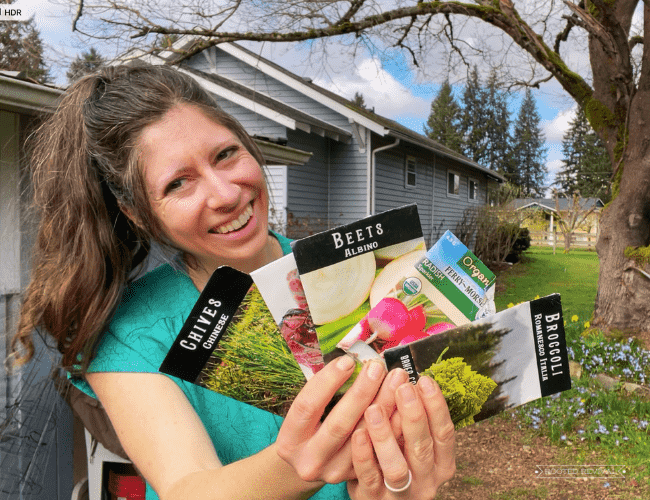
Watch on YouTube: If you are more of a visual learner, I have a full YouTube video on this exact topic. You can watch it here!
The Spring Cool Season Garden
Gardening by the seasons allows you to grow more food in each season. Why? Because we are planting the things that will naturally thrive during each season to maximize our yields and are constantly rotating our crops for added diversity! Understanding each unique growing season is an important component in successional gardening.
Successional planting is a method that allows you to plant and harvest consistently throughout the year rather than just having one main planting and harvesting season. By using this gardening style, you can continually sow and grow different crops throughout the year – giving you a varied and abundant harvest for much longer!
March and April are generally considered the “cool” gardening season. While this might not be true for every growing zone in North America, it is true for a lot of zones (we’ll talk more about zones in a bit!). And if you live in zones 6-8, you can probably count on the cool season consistently lining up with the months of March and April.
But, regardless of your growing zone, you most likely experience a cool season. And during that season, you can expect some consistent things to be true.
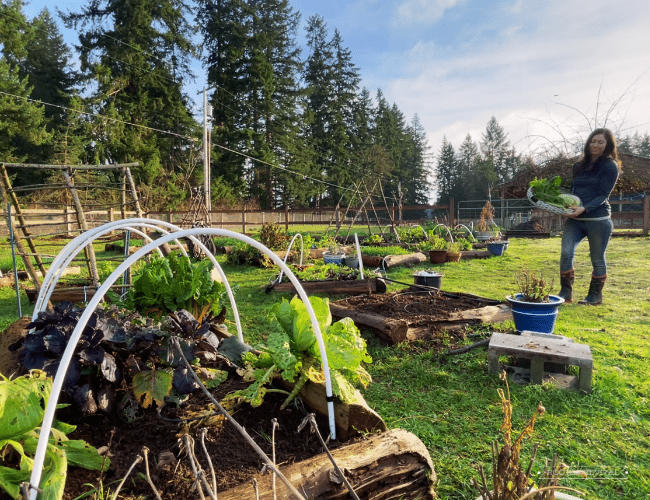
Weather patterns expect during the cool gardening season:
- Average high temps are consistently in the 40’s – 60’s.
- Frost occurs regularly but hard freezes and snow are rare.
- In almost all regions, the cool season starts in mid- to late -February and continues into March and April. In some regions, it can also include the early parts of May. The cool season occurs again in the fall (September into early December) in many regions.
- This is an ideal time to direct sow cool crops outside and start warm crops indoors.
- You will want to monitor overnight lows and cover any young and tender seedlings as needed for hard frosts and unexpected snows. However, most cool crops can handle light and occasional frosts without problems.
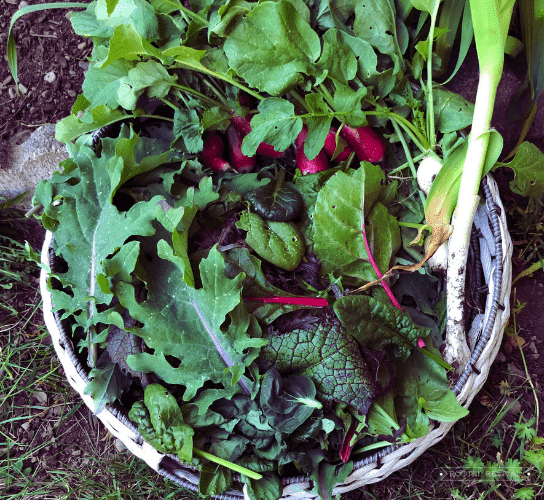
Growing Zones versus Frost Dates
Now that we’ve talked about some of the weather patterns to expect during the spring cool season, let’s quickly discuss frost dates and growing zones.
Growing Zones
“Growing zones” (as they are often referred to) are really hardiness zones. They provide a consistent measurement of average low temperatures. Each “zone” is established based off its average low temperatures within 10 degree increments.
The purpose of growing zones is to establish the likeliness of plant hardiness. It is not necessarily a way to measure when you should be planting. Rather, it’s much more useful in regards to overwintering perennial plants.
If you live in the US, the growing zones are established by USDA and you can find your growing zone here. Canada also has a similar system, which you can learn more about here.

Frost Dates
Frost dates tell you the average expected date for your last spring frost and your first fall frost.
It’s important to understand that frost dates are not 100% accurate. They give us a benchmark and are based on 20-year averages. But there is obviously no way to completely predict when a first or last frost will occur. If you aren’t familiar with your average frost dates, you can find them here.
Average frost dates are very important and give us much better information (compared to growing zones) when we are seed starting.
And here’s a perfect example: When we lived in Idaho, we were in Zone 6. Now that we live in Western Washington, we are in Zone 8. Those two zones make a significant difference in what we can grow when it comes to perennial plants. But, when it comes to when we start our seeds, it’s exactly the same! In fact, our average first and last frost dates are identical! In both locations, our average last frost is May 5 and our first expected frost is October 6.
Because of this, you can see how important it is to understand the difference between the two concepts. While it is beneficial to know both your growing zone and your frost dates, the two are helpful in very different ways. And when we are seed starting, we are much more concerned with the frost dates.

What seeds can you plant in March and April?
So, which seeds can you plant in March and April? Now that we have a better understanding of our growing zones, our expected last frost date and the cool gardening season, it’s time to talk about seeds! And, there are actually a lot of crops that you plant right now! So let’s jump into it and talk about which seeds you can plant in March and April!
Seeds you can plant outdoors in March and April
We will start by talking about the seeds that you can plant directly in your garden. These are often referred to as “direct seed” or “direct sow” because you are planting them directly into the garden as seeds.
All these crops are considered “cool crops”, meaning that they enjoy the cool gardening season. In fact, they thrive in it! Most of them can even handle frost! If you are concerned about an occasional super hard frost, you can always cover them, but most of them will spring right back after a frost. (I’ve got even more info on cold hardy veggies here!)
To capitalize on the cooler gardening season, it’s important to start a lot of these crops early. Many of these crops don’t enjoy heat so they tend to bolt or fade out during the summertime. Luckily, that’s great timing for us to replace them with our heat loving summer crops… ahh the beauty of successional gardening based on the seasons!
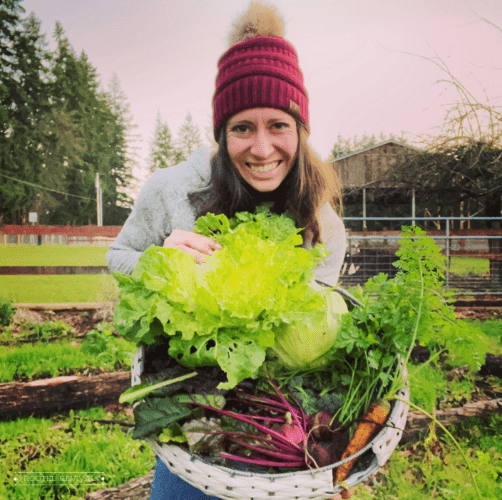
Seeds to Direct Sow (Plant Directly in the Garden) In March & April:
- Onions: bulb onions, onion sets, chives, green onions, shallots, leeks and spring planted garlic.
- Cold hardy greens: chard, tatsoi, mustards, mizuna, spinach, kale, arugula, romaine, buttercrunch lettuces
- Root crops: radishes, carrots, turnips, beets, parsnips, etc.
- Cold hardy herbs: cilantro, parsley, calendula, mints, sage, oregano, chamomile, rosemary, thyme
- Cabbage
- Broccoli
- Cauliflower
- Kohlrabi
- Peas
- Fava beans
- Celery
- Asparagus (live roots or seeds)
- Strawberries (live roots or seeds)
- Potatoes (more about that here!)
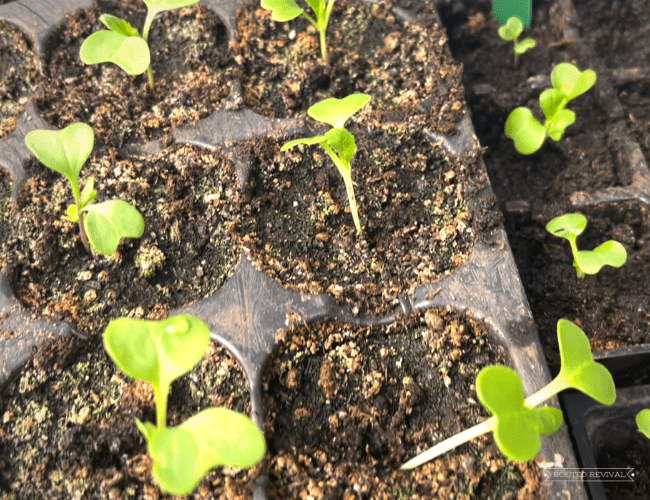
Seeds you can plant indoors in March and April
March and April are also the perfect time to get your summer crops started. These are heat-loving plants that are frost tender, meaning that they can’t sustain low temperatures or frosts. So they won’t be able to be transplanted into the garden until after your last frost, but you can still start them indoors now.
If you need help starting your seeds indoors, I have some amazing resources to get you started:
- Seed Starting Mistakes to Avoid (YouTube Video)
- How to Make a Seed Starting Soil Mix
- Choosing the Right Seed Starting Containers
- How to Sow Seeds in Containers
- How to Make a DIY Grow Light Cabinet
- How to Water Your Seedlings the Right Way!
- How to Mark & Track Your Seeds & Seedlings
Because many of these hot crops (like nightshades) can be slow growing, it’s important to start them now! In most regions, we just don’t have a long enough growing season to simply plant them directly in the garden once the temperatures warm up.
On the other hand, squash family plants grow quite quickly. So, while you may want to start them indoors to give them a jump start on the growing season, you generally don’t need to start them as early as peppers, eggplants and tomatoes.
Remember that each variety will require a different amount of time to go from seed to harvest. This is known as the “days to harvest” number and can often be found on the seed package or by researching the variety. This can be helpful to keep in mind when you are planning when to sow your seeds.
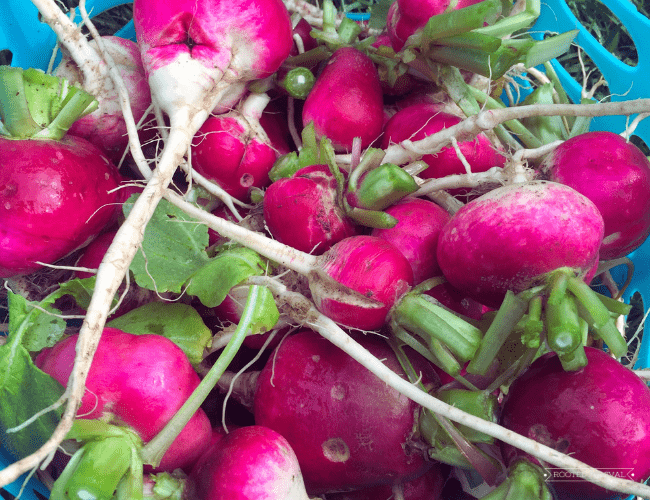
Seeds that you can start indoors during March & April:
- Peppers
- Tomatoes
- Eggplant
- Okra
- Melons
- Cucumbers
- Summer squash
- Winter squash (including pumpkins)
- Tender herbs (basil, dill, tulsi, spilanthes, summer savory, lemon grass, lemon verbena)
Pin this post for later!
